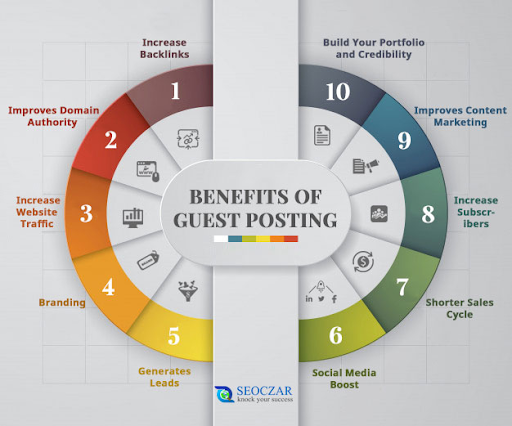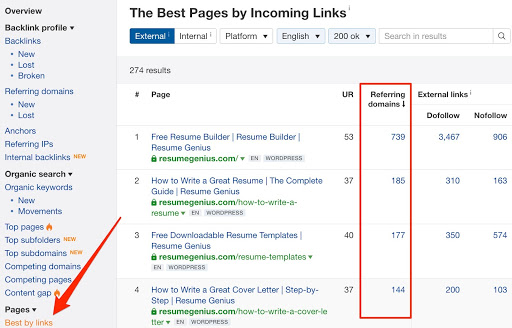Copywriting is a challenging task, often because it involves encouraging the reader towards a call to action, such as signing up or buying. The process is time-consuming, cumbersome, and competing.
As a copywriter, you need to begin with an idea that has the right research and thought backing it. Eventually, as the idea begins to take shape on your screen, you need to put on the hat of an editor and diligently proofread through columns of text before publishing it.
Every professional has their tools and as a copywriter you need your own set to complete tasks faster, better and in an automated manner. The following 16 best tools to use as a copywriter are hand-picked to make your job easier.
1. Ideaflip
It is important for content writers to indulge in some serious brain-storming as the first step to producing thought-provoking and interesting content.
In a world of instant and constant bombardment of information, it can be both simple and difficult to find a topic that is worth talking about and will get the expected results.
Ideaflip is a fantastic tool if you want a visual and interactive environment to think of new ideas. The tool allows writing down, managing and development of new ideas that can take the form of a unique and result-oriented content piece. Ideaflip has a functional user interface design that removes all visual constraints. This means you are free to do anything that would help make your ideas come to life.
2. HubSpot’s Blog Topic Generator
If you are wondering how to tackle the burdening task of generating a topic that hasn’t been used and abused by hundreds of writers and copywriters, then HubSpot’s Blog Topic Generator is the tool for you.
It allows you to engage with existing information available on the web to find and define a unique topic.
All you need to do with HubSpot’s Blog Topic Generator is to enter three or less magic keywords and be enlightened with well-articulated and highly interesting blog topics that you can use right away. Even if you don’t find a notable topic, this tool will definitely put you in the right direction.
3. Portent’s Content Idea Generator
Headlines are one of the trickiest parts of writing. This is what is actually going to catch the average reader’s eye and you want it to not just look good, but great. It also affects a lot of the page SEO where you post your wonderful content. Still question about this? Read more here. If you are clueless about the wordings to choose, then Portent’s Content Idea Generator is the right tool for you.
It will help you generate a distinctive and eye-grabbing headline in a matter of seconds. Sometimes, the tool can churn out rather simplistic ideas. But, fear not, because these can inspire you to create individualistic ways to deliver your idea.
4. Headline Analyzer
Headline Analyzer is another useful tool that aids in generating an effective and quantitative measure of your headline. It works diligently towards analyzing the overall grammar, structure, and readability of a headline in question. The tool also provides a statistical representation of these aspects that highlights the strengths and improvements in your headline.
This tool goes a step further by showing exactly how your headline will look as a simple subject line. You can even benefit from the several helpful tips that would ensure that your copy has the perfect headline.
5. Copyscape
Plagiarism is a serious offence in business and academic circles. When you plagiarize someone else’s work inadvertently or intentionally, it can lead to Google penalties that would lower the site ranking score. By using Copyscape, you can keep your content as unique and original as possible.
6. Hemingway App
Hemingway App is an online editing tool that consistently remains popular among bloggers and writers for its convenient interface and text editing system.
The highlights of the tool includes the way it calls attention to phrases and sentences in a copy that are too long or complex, suggestions for eliminating excessive adjectives and adverbs, and using active voice construction.
Additionally, the tool has a document style setting and also shows the readability score for the text. There is a counter which shows the total number of words, paragraphs, characters, and sentences which allows you to tweak the structure a bit if it lacks readability.
7. StackEdit
If you have trouble converting text into .html then StackEdit can be a very useful tool. It also allows copying text from Google Docs, WordPress, or Word without making any formatting changes. StackEdit is a markdown editor that is created especially for web writers.
There are several layouts, themes and shortcut combinations that can assist you in customizing your copy. It also has an in-built spell checker that supports multiple languages. The best part about this tool is its offline functionality.
8. Grammarly
The ability to produce content free of grammatical errors is an essential skill for any writer. Grammarly is probably the best grammar and spell checker that significantly speeds up the process.
Besides spotting errors which other grammar-checking apps cannot do, Grammarly also helps with text optimization so as to make the entire piece more readable.
The multi-faceted roles of this tool make it any writer’s best friend. It comes in handy for the advanced native English speaker as well with the knack for spotting an array of writing style defects and grammatical errors.
9. OutReachFrog
While not technically a tool, OutReachFrog does provide a bunch of tools that allow site owners looking to get their content published on relevant blogs. They’re a great service and somewhat of a leader when it comes to getting your name out there via blogger outreach.
10. Thesaurus
Copywriting for the purpose of driving the reader towards making a purchase decision requires the right usage of words. In fact, any copywriting expert will have you know that a single word can be the difference in your marketing content.
Thesaurus.com can come in very helpful when you are looking for a certain phrase or you are stuck for words. The tool offers a wide range of antonyms and synonyms in varying contexts.
11. MozBar
MozBar is a free browser extension that offers on-page access to site analysis tools and link metrics. A quick glance at the extension bar can give you all you need in terms of metrics including Page Authority and Domain Authority of a site.
MozBar is quite effectively an all-in-one toolbar for SEO research. Its Keyword research can let you know whether you are on the right track with the site’s audience in real time.
12. Canva
Canva allows writers to include pictures and illustrations that can visually enhance their content piece and make it more appealing to the reader. You don’t have to rely on the internet to find appropriate pictures which may denote a sense of unoriginality.
With Canva, you can create your own images that are highly relevant to your copy for free. There are several creative tools on offer which are easy to use and can lend a new dimension to your content.
13. Google Docs
Google Docs is a utilitarian and highly functional tool that allows you to store your documents on the cloud and give access to anyone from anywhere. It also offers varying levels of access so that you are always in control. This also makes it perfect for sharing documents with clients.
Google Docs also allows you to open and edit your document, and change its format to whatever is preferred by your client.
14. Ahrefs
Ahrefs is largely a toolset for SEO analysis and backlinks. However, within this toolkit, there is a specific copywriter’s apparatus that allows for the detection and analysis of backlinks. It also allows for finding traffic estimators and relevant keyword ideas.
Ahrefs Site Explorer tool and Content Explorer tool is a must-have for every copywriter. It is ultra-useful to those looking to explore profitable keywords and promoting their content on social media.
15. HootSuite
This tool makes scheduling and publishing social media posts a breeze. You can use the options to schedule your posts in advance as soon as you finish creating them and not worry about missing to publish them.
You can move on to dealing with other issues and HootSuite will take care of the publishing when the time comes. The tool also sends a notification so that you know what is happening with your account. Currently, HootSuite only works with Instagram.
16. Scrivener
It can get very confusing to think up good copy material and organize multiple drafts. You may find yourself navigating through 20 different tabs, 2 books, 3 documents and a number of sticky notes.
Scrivener can come in useful here by managing everything for you in one place. Think of it as a physical binder that allows you to do your entire note taking and manage them in one place. You can keep materials or instructions received from a client in one folder. You can also place all your ideas about a particular topic in one document.
17. Infographic Video Maker
Infographics are ruling the web for a number of reasons. They offer information in an easily digestible mode while looking visually appealing. Readers can’t get enough of infographics and as a copywriter you need to keep up with the changing times.
Infographic video maker doesn’t just allow you to feature these on your blog or website, but also helps you create stunningly beautiful and animated infographics. You can now go the extra mile for your or your client’s website.






